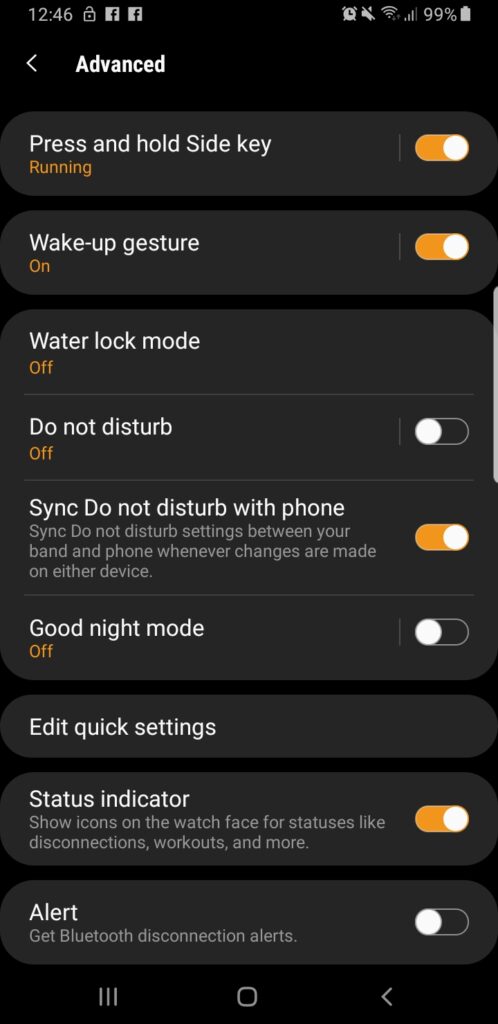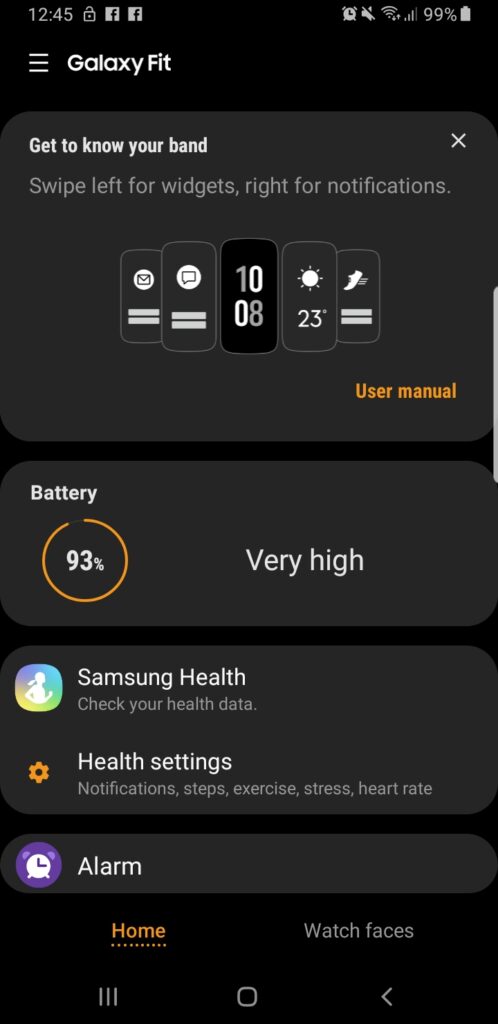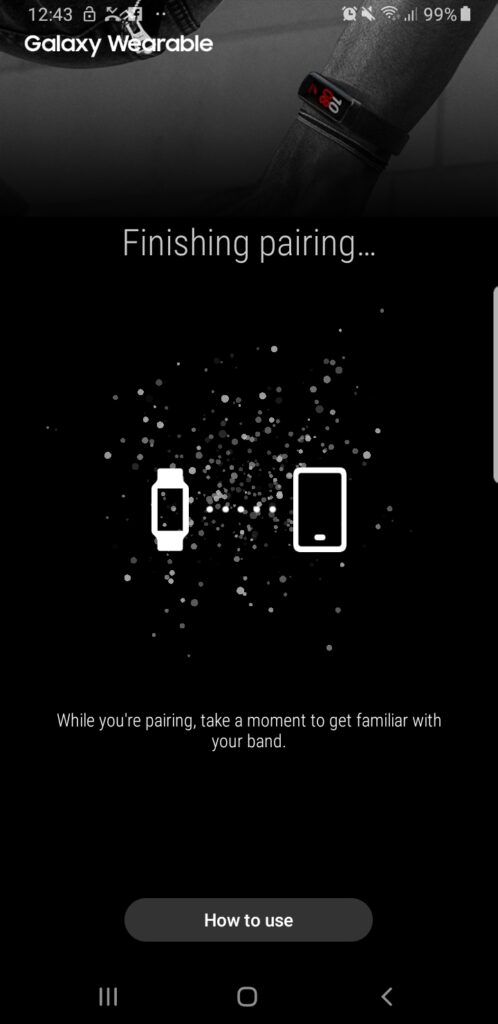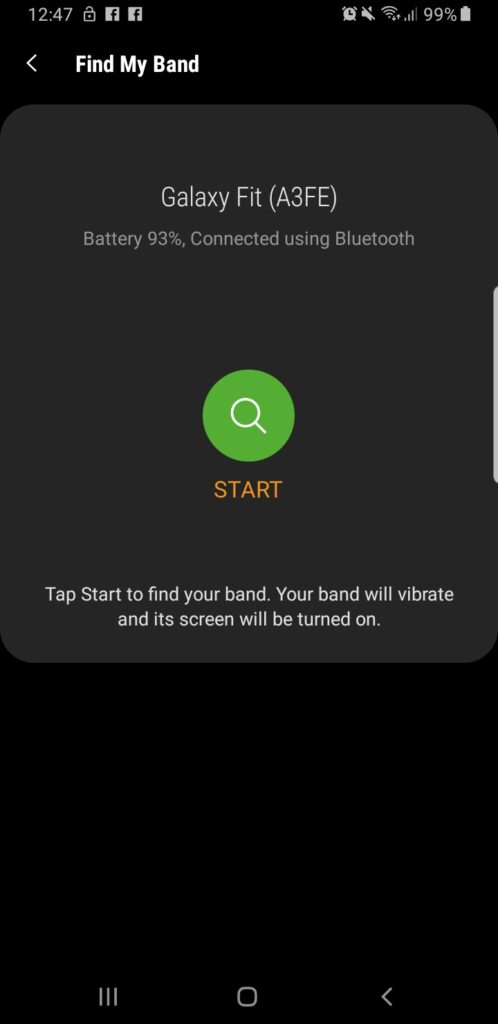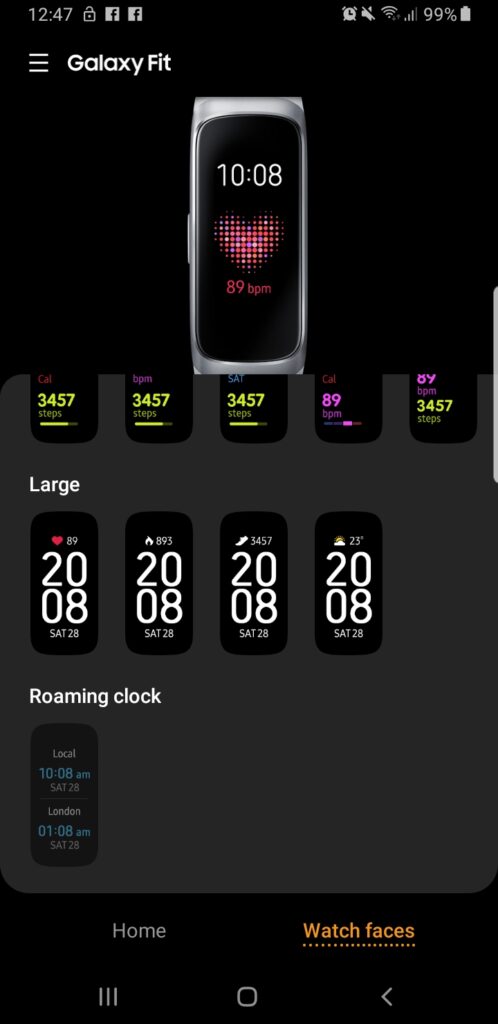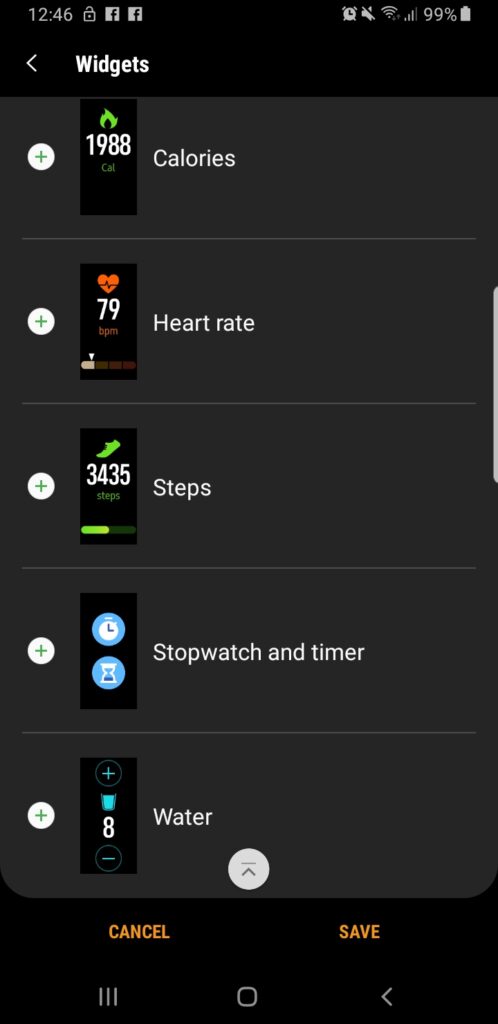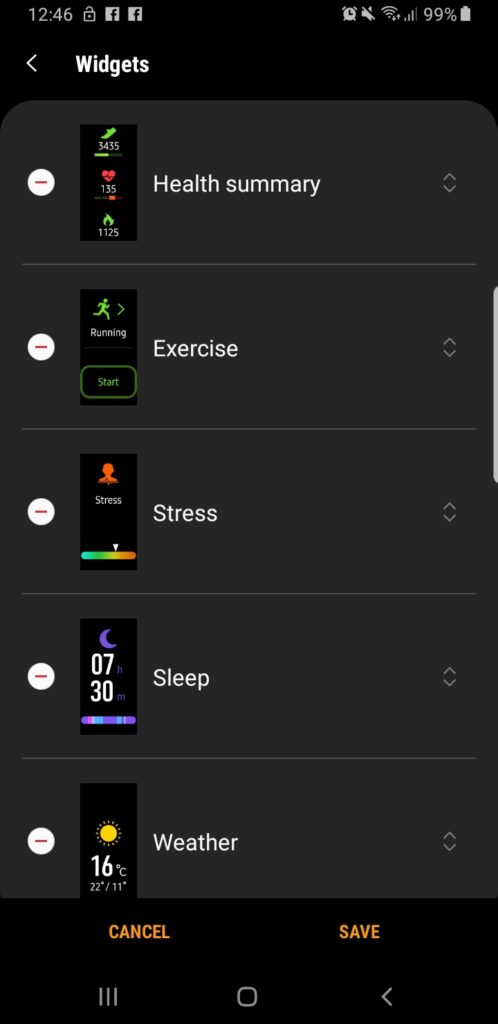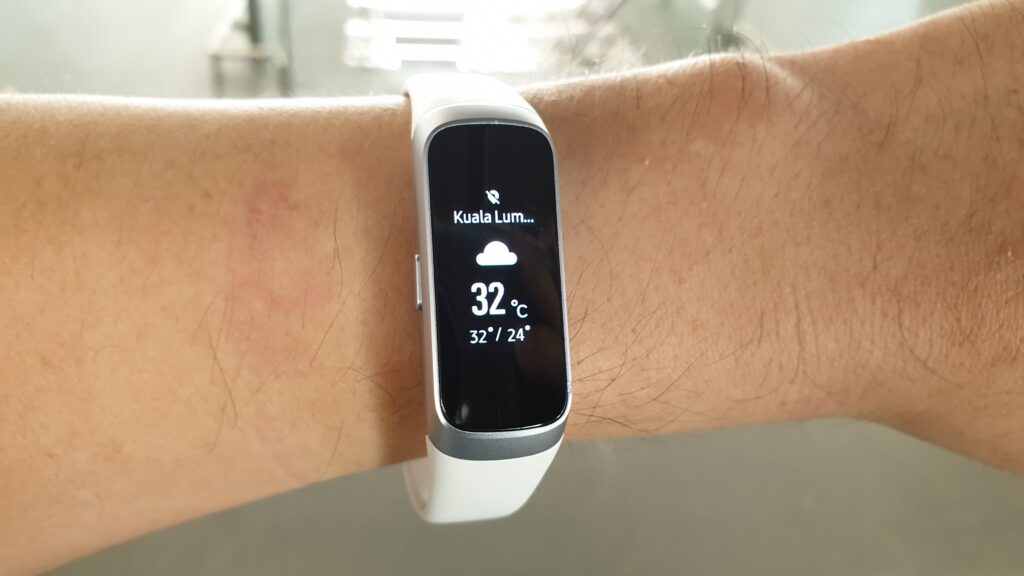
Samsung Galaxy Fit Review – Back to Basics
The Samsung Galaxy Fit is part of Samsung’s latest generation of smart wearables and pares down unnecessary foibles in order to focus its design on the absolute essentials – tracking your fitness or lack thereof.
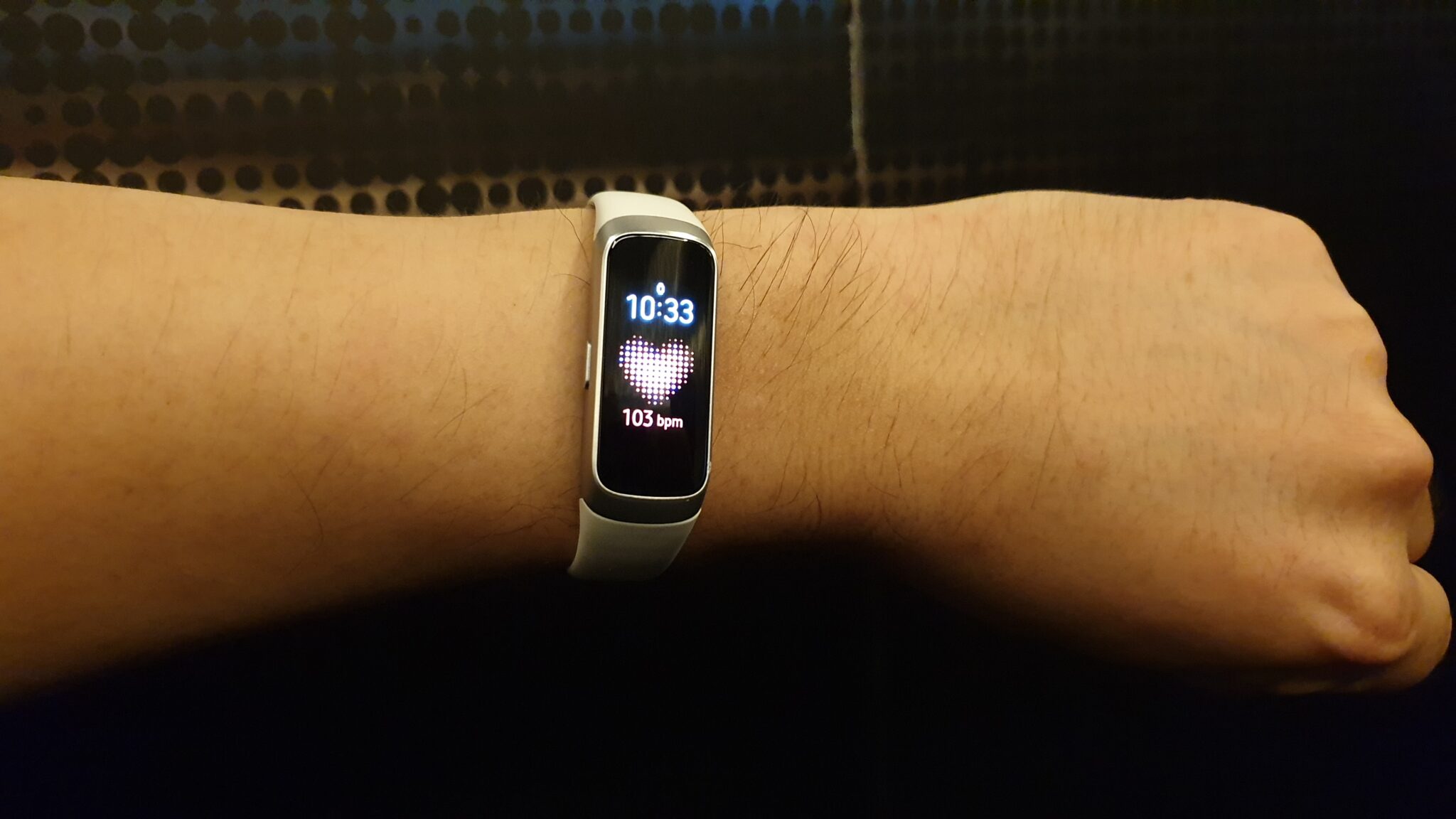
If you’re after the full monty of features in a smartwatch like the ability to play music, games, take calls and the like, you’ll likely want to veer towards Samsung’s other full-featured smartwatches like the Galaxy Watch Active and the new Galaxy Watch Active 2 as the Galaxy Fit is first and foremost a fitness tracker. It won’t let you play games nor will it let you listen to your playlist. What it does with a significant measure of competence is track your fitness endeavours, your sleep quality and your heart rate.

The Galaxy Fit requires a fairly tight fit for the underside heart tracker to work properly so you’ll need to strap it onto your wrist securely for best results.
The Galaxy Fit itself is packaged in a small and fairly nondescript box and comes with the wearable itself and a proprietary docking cradle to charge it. The docking cradle itself latches onto the back of the Fit with one end going to a cable ending in a USB Type-A jack for charging duties.
The Galaxy Fit itself comes in either a shade of black with matching straps or white with a silver case. Our test unit came in the latter finish. Externally, the device itself sports a silvery hued case which houses a vibrant 0.95-inch 120 x 240 pixel AMOLED touchscreen, a single side button and an underside heart rate tracker.
The Galaxy Fit’s minimalist features are intended for a reason as there’s less ports to batten down, which allows it to have a MIL-STD-810G milspec rating for toughness and, most importantly, 5ATM water resistance so it’ll stay intact when you’re doing laps in the pool and survive if you get caught out in the rain.
The straps are removable and are made of a comfortable silicone material designed for long-term wear. Rather than a traditional metal clasp, the strap has a little plastic nub on one end fitting into the strap holes on the other. It’s not exactly easy to put on or, for the matter, take off one-handed but it does the job and helps the Galaxy Fit remain secure on your wrist even through the most arduous exertion.
Wearing the Galaxy Fit is a fiddly affair and you’ll need to achieve a fairly tight fit for the heart rate tracker to work properly but once donned, it feels so light that you likely won’t even notice that it’s there.
Samsung Galaxy Fit Performance
Getting about the Galaxy Fit’s menus is via a series of vertical and horizontal swipes along with the occasional tap on the 0.9-inch AMOLED display. On top of the obligatory ability to tell the time, the Galaxy Fit is able to show your stress level, your heart rate, calories burned, steps taken, notifications from any apps you have on a paired smartphone and your sleep quality.
More importantly, it allows you to track up to ten exercises at a time from the usual walking, running, cycling and swimming to even more exotic ones like alpine skiing and aqua aerobics via a paired Samsung Wearable app from your smartphone.
If whatever you’re doing doesn’t even exist in Samsung’s expansive list, you’re still able to select ‘Other’ as a generic catch-all term to at least keep track of your heart rate. In lieu of that, the Galaxy Fit is smart enough to automatically track the basics which include walking, running and biking without your direct intervention.
- Pairing the Galaxy Fit with your smartphone requires several app downloads
- If you ever misplace your band you can use this handy feature
Once paired with the Samsung Wearable app which is free to download on iOS and Android phones, you’re also able to customise what the Galaxy Fit displays to some degree. You’re able to select from a modest range of different watch faces though they’re all digital with no analogue watch faces for traditionalists, select what exercises the Galaxy Fit ought to track from a predefined list and choose what notifications appear on the Galaxy Fit on a per app basis. You’ll also need to get the Samsung Health app that acts as the main means of recording and reviewing your fitness endeavours and an additional downloadable Galaxy Fit Plugin so that your phone recognises the Galaxy Fit.
Over the course of two weeks, we put the Galaxy Fit to the test tracking our usual work commute which also involves a two kilometer brisk walk on a known route as well as a brisk jog around the local lake gardens.
The Galaxy Fit was a bit off by a few dozen meters or so from the actual distances traversed though oddly enough it was consistent in measuring this slightly off kilter figure. To be fair the watch lacks an internal GPS and also doesn’t latch onto your paired smartphone’s GPS either so it’s likely something that can be fixed with a software update.
 Heart rate measurements are fortunately more consistent and it was able to differentiate a resting heart rate and a more vigorous one when we’re out and about outdoors with the results seen on the Samsung Health app.
Heart rate measurements are fortunately more consistent and it was able to differentiate a resting heart rate and a more vigorous one when we’re out and about outdoors with the results seen on the Samsung Health app.
The Galaxy Fit also lets you see notifications off the display but the tiny nature of the touchscreen means that you can’t do much other than acknowledge incoming calls and messages. You’re able to answer them with a series of canned replies which is a fair compromise seeing as typing a full-on answer on a display that’s about the size of a postage stamp is a royal pain.
Samsung’s fitness tracker was also able to help track our sleep patterns including total time you’re out for the count, your time spent in the various sleep stages and how your quality of sleep or lack thereof over time. As far as features and capabilities go, the Galaxy Fit manages to handle the essentials in a very competent fashion.
Samsung Galaxy Fit Battery Life and Conclusion
On paper, the Galaxy Fit is rated to have about a week of battery life for a fairly active user. With regular usage every day and a good several kilometers of mileage walking back and forth, the Galaxy Fit was easily able to last plus five days before it needed a charge.
All throughout this time, it kept ticking on and tracking all the necessary variables in a reliable fashion without faltering. The silicone strap managed to resist all manner of sweat and crud over the course of the week and proved comfortable enough to wear to bed without feeling conscious about it..
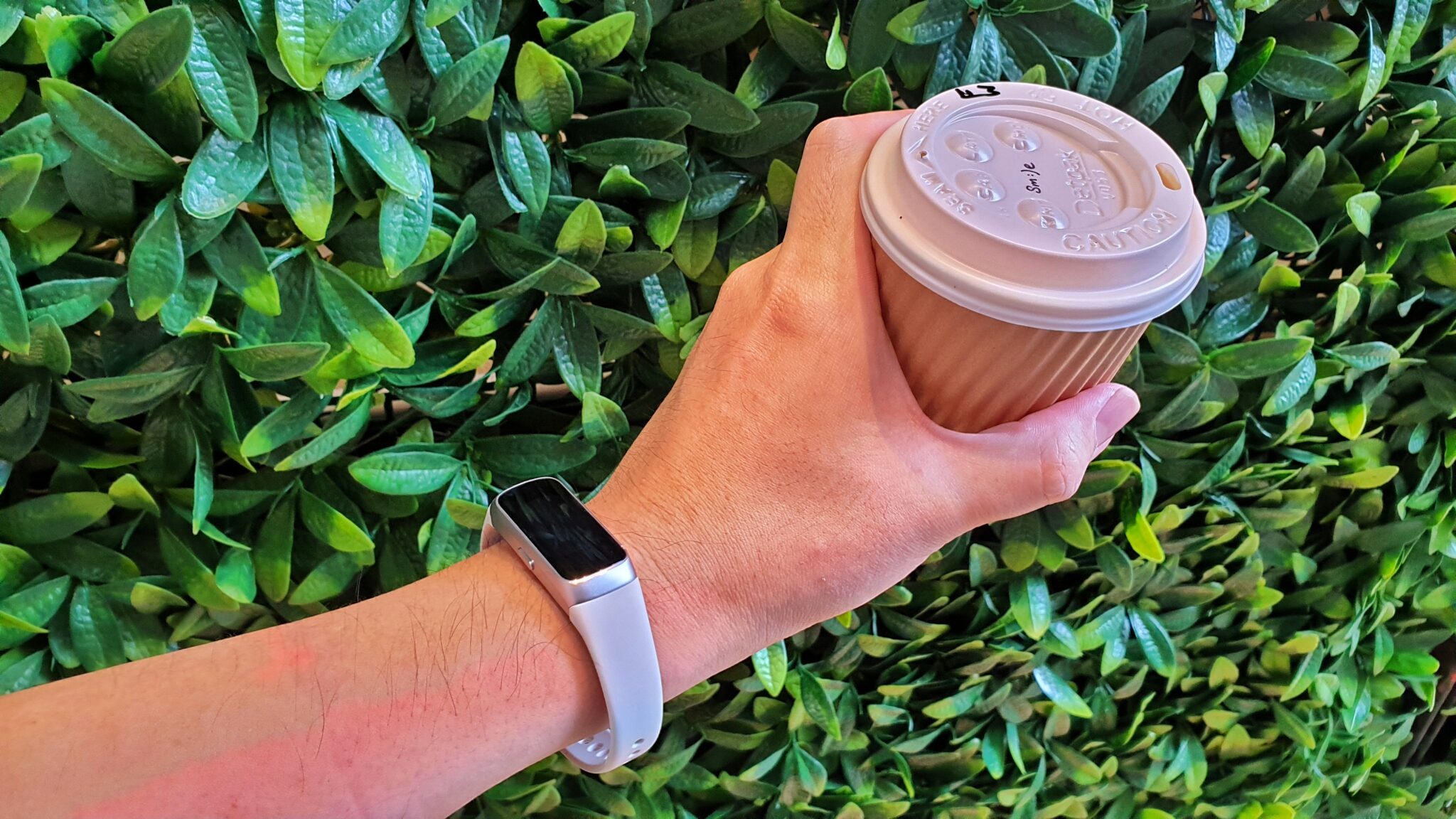
Charging it requires you to clip it to the provided charging cradle and then hook it up to a USB charger. Alas, it won’t charge wirelessly or it’d have been a fantastic addition to the Samsung Powershare ecosystem whereby you can simply plonk it on the back of an S10 to juice it up much like their Galaxy Buds. Hopefully the next incarnation of the Galaxy Fit will include that feature.
As it stands, the Samsung Galaxy Fit is a comfortable fitness tracker with good battery life and relatively accurate fitness tracking capabilities suitable for casual athletes and those looking for a reliable means of keeping tabs on their fitness. If you’re not one to invest in the current incumbents in the fitness tracking market, the Galaxy Fit is well worth a look.
What we liked Excellent battery life, decent fitness and heart tracking, comfortable to wear, 5ATM water resistance
What we didn’t No wireless charging, no internal GPS
We say The Samsung Galaxy Fit fitness tracker is ideal for casual athletes, offering the essentials in the form of good battery life, a comfortable band for extended usage and relatively accurate fitness tracking, all at a price tag that won’t have you running for the hills.
Specifications
Price RM369
Screen 0.95-inch, 120 x 240 pixel AMOLED
Connectivity Bluetooth 5.0
Processor MCU Cortex M33F 96MHz
Memory 32MB
Battery 120mAh (up to 11 days, quoted)
Weight 45.1 x 18.3 mm / 23g
Review unit courtesy of Samsung Malaysia. Available for purchase at their official page here.

